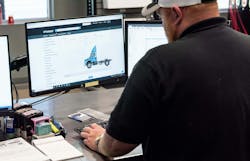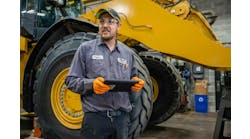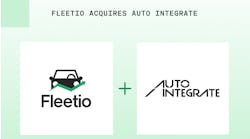This is part one of a two part story.
Fleets and service providers have several questions to answer when considering how to effectively choose the best distributors and sources for parts, lubricants, tools, and shop equipment. These extend beyond pricing, because so much can affect the true cost of doing business with them. How do they communicate? How fast can they deliver what you need? And what kind of variety and inventory do they have?
All of these factors can impact uptime, and therefore your revenue. For example, if Distributor A offers better pricing than Distributor B, but ordering is complicated and time-consuming, or all the necessary information isn’t readily available, that hurts your labor efficiency for that specific task. But if making one poor parts specialist go through an exhaustive search gets a truck back on the road faster and generating revenue, that’s time well spent.
John Centnarowicz, sr. category manager, vehicle maintenance, Zoro.com, pointed out that choosing the best sources is situational.
“If it’s an emergency and the business stops running, finding a source that can ship the part you need the same day is going to be one of the most important factors,” he said. “If it’s a planned upgrade or an opportunity to make your fleet run more efficiently, the source needs to offer a wide selection of products so you can find the right parts for the particular make or model of your vehicle.”
There are several other things to consider in choosing how and where you get parts, so we put together some best practices to choose a distributor for a fleet’s various needs.
Organizing needs and choosing the right partner
With so many SKUs out there, it’s hard to keep track of it all. One way to make this easier is knowing where to find the correct parts information.
“Fleets and service providers should have access to all the correct parts information so they can properly prepare for a service event,” said Anthony Balkonis, VP, service and warranty, Navistar, who got his start as a service advisor 24 years ago.
But how to make parts visibility more accessible? In a blog created by Chevin, the fleet management provider recommended an orderly inventory room with a focus on high-volume items. Parts room personnel “should be trained to recognize which parts in your inventory are fast moving, therefore needing to be reordered more frequently.” These are likely parts involved in preventive maintenance. Conversely, shops should also identify less-used and obsolete parts to clear shelf space, which also lowers costs and reduces unnecessary spend.
Chevin noted suppliers are more familiar with manufacturer parts lists and should be able to help train staff to optimize organizational procedures.
And identifying which parts are most used can also be tracked via fleet management software, as well as through a supplier’s ecommerce site. Chevin noted the ability to integrate your fleet management system into the parts supplier’s system also improves efficiency and visibility.
A good parts provider also “asks what options are available for parts, such as new and remanufactured items, and what makes sense for the specific situation,” Balkonis said. He added Navistar in particular “can help by leveraging our insight on what products fleets are using.”
Once you know which parts you need most, you can look at which supplier offers the best quality parts, pricing, and delivery speed. Another added benefit overall of improving your parts visibility, especially for small and medium-sized fleets, is being able to consolidate to a few suppliers, which increases your purchasing power, noted David Seewack, CEO of FinditParts.
He also suggested working with smaller dealers and distributors with less large-fleet business, making you “the bigger fish in the smaller pond.”
Choosing the right parts
Brad Williamson, director of parts marketing & strategy, DTNA, said in general, a customer should consider their buying needs. “They should think about the part, the complexity of the repair, and the vehicle’s age and duty cycle to determine what option best fits their needs,” he advised.
“Fleets and service providers should ask themselves, ‘What equipment will I be working on?’” related Jeff Harris, sr. manager, fleet sales, Cummins-Meritor. “What are the requirements and are there warranty factors to consider?”
Seewack said fleets should also ensure that parts meet safety and performance standards.
“Look for suppliers that offer genuine OEM parts and high-quality aftermarket options,” he said. “There can be a temptation to go with unknown brands from overseas that offer cheaper parts, however, the level of testing and engineering of those parts is less known.”
Look for suppliers that offer high-quality products from reputable brands, noted Chris Johnson, business development manager, Diesel Laptops. “Ensure that parts, lubricants, and tools are compatible with the vehicles in your fleet because compatibility issues can lead to costly delays and disruptions,” he said.
“While cost is important, consider the overall value offered by the supplier,” Johnson continued. “Competitive pricing coupled with value-added services such as warranty coverage and after-sales support can provide long-term benefits.”





